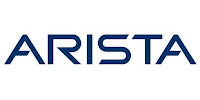I would like to begin by saying thanks to all the MB VMUG members who attended. It was great to see the interest in the learning that the MB VMUG provides through special speakers, and the technical presentations.
We kicked off the meeting with the MB VMUG Leader presentation and Anil Sedha spoke about VMUG in general, VMUG advantage membership, MB VMUG workspace, and the new stuff happening within the group.
For those of you who missed it - those in attendance were informed that we'll be getting our new website soon, the launch of a Quarterly newsletter, hands on lab coming soon, and the VCP5 study group (special announcement) is being launched.
As our group grows it is now time to move towards getting a professional website that will provide value to our programs and increase sponsorship. All local blogs by VMWare Professionals in Manitoba will be displayed on it, and educational content will be posted in addition to the blog. Secondly, a quarterly newsletter will be issued starting Q1 2013 and anyone interested in submitting articles is welcome to do so prior to the deadline of November 30, 2012. Articles should have a core focus on VMWare or associated technologies, independent, free of marketing verbiage, and limited to 800 words. Finally, interests are now being received for the MB VMUG vSphere 5 Study Group. Attempts are being made to get sponsorships for study material and exam certification fees. Those interested to take part in the study group are invited to get in touch with me through LinkedIn or sending me an email on manitoba@vmug.com.
This presentation was followed by our key speaker - Mike Laverick (Senior VMWare Evangelist) who spoke remotely and gave an excellent presentation about his vCD setup in a personal lab environment and how this environment can be simulated in our organizations for learning/testing. There were some great insights as he went about explaining his setup. A video of his presentation will be posted later for review again considering we had some audio hiccups.
Keith Aasen from NetApp followed up after Mike and took off straight away with his VMWorld Top 10 session about storage performance and troubleshooting performance issues. His session provided a deep dive into the kind of performance issues that can arise during disk performance problems and how he and his customer methodically approached and resolved the issue. Keith got the group going with his Q/A and had a very interactive session.
After a short break for networking and coffee our very own Scott Jordan (VMWare SE) began his presentation on vCloud Suite features and licensing. He covered a wide range of topics ranging from the informational release of the product, edition comparision, feature set, and licensing models. Scott spoke about the comparative differences between the current release and the vCloud suite. He also gave an insight into the upgrade steps and the Fair Market compensation introduced by VMWare for vCloud suite. An important note was that after Aug 27, 2012, VMWare has changed Fair Market compensation to be at 90% of the existing list price for products that a customer already owns. More details can be taken directly by reaching out to Scott or myself and I can guide to VMWare's statement on it.
In conclusion I reminded everyone that feedback is very necessary for planning purposes and it helps the group if everyone participated in discussions on LinkedIn, as well as gave their input to the Polls that have been posted. We spoke about general timings of the MB VMUG meeting - morning versus evening and the general consensus was to hold the meeting during morning time since more people are able to attend and take time off from work considering that there is significant learning for the professional VMWare community.
In my closing remarks I also mentioned that in between our quarterly VMUG meetings there are plans to introduce an online technical session/demonstration that would facilitate remote learning from the comfortness of your office and would add value. Whether we do a lab/demo/technical session will be determined in due course once I start getting the senior vSpecialists involved. This online session will be attempted using Google Hangout as there is great potential in using social media for MB VMUG's benefit.
Finally, there were the prizes/giveways for things ranging from technical books/DVD's to promotional items. It is pleasing to say that every member in attendance who stayed until the end walked away with something useful.
The giveaways were -
- Highly popular Books, DVD's, T-shirt/Cap from David Davis of TrainSignal
- Books, vSphere Reference Charts, and promotional items from VMUG HQ
- Books from O'Reilly User Group Publications. O'Reilly also offered a free e-book to all our members in attendance. Those who attended but did not give their email address are requested to do so asap in order to receive the free e-book (limited to members in attendance only).
- Promotional items from VMWorld 2012 (courtesy VMUG for t-shirts and vendors like Red Hat and Symantec)
Last but not the least - a BIG thank you to our sponsors. No important event really gets successful without active participation and support of its sponsors. We had great support from NETAPP (Gold Sponsor), Arista (Silver Sponsor), and Onx (Bronze Sponsor) and thank them again for all the help.
Follow Manitoba VMUG on Twitter - http://twitter.com/manitobavmug
Manitoba VMUG Workspace - http://www.vmug.com/manitoba
LinkedIn Page - http://www.linkedin.com/groups?gid=3820802
To sponsor the MB VMUG activities or meetings please contact Anil Sedha through LinkedIn, or via email - manitoba@vmug.com
Oct 24, 2012 meeting sponsors (logo):



